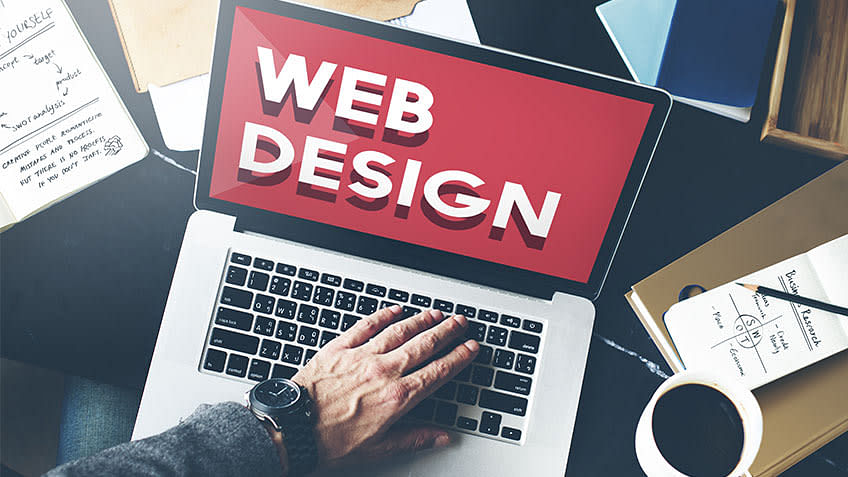Exactly How Specialist Web Design Can Change Your Online Visibility
Exactly How Specialist Web Design Can Change Your Online Visibility
Blog Article
A Comprehensive Overview to Crafting Visually Appealing and Functionally Robust Website Design Solutions
In the ever-evolving landscape of internet design, the balance in between visual appeal and useful honesty stays critical. A comprehensive comprehension of fundamental style principles, along with a keen concentrate on customer experience, can substantially enhance the performance of web services. By leveraging components such as shade theory and receptive layouts, developers are furnished to create not just visually pleasing user interfaces however also ones that promote user involvement. Nevertheless, the trip from idea to implementation includes added layers of complexity that merit expedition, particularly in the worlds of testing and optimization. What strategies can be utilized to achieve this delicate stability?
Understanding Design Concepts
Understanding design principles is essential to developing reliable web services that engage individuals and connect messages plainly. These concepts act as the foundation for any successful style job, assisting the aesthetic and useful facets of a website. Key design principles include equilibrium, contrast, alignment, repetition, and closeness, each playing a crucial role in developing a natural and aesthetically pleasing design.
Contrast improves readability and draws focus to vital features, enabling users to browse the content easily. Repetition enhances a consistent aesthetic language, strengthening brand name identity and boosting user knowledge with the interface.
Importance of Individual Experience
Customer experience (UX) is important in website design, as it directly influences just how visitors connect with a site and regard its value. A properly designed website not only attracts individuals yet also maintains them involved, eventually resulting in greater conversion rates and client satisfaction. UX includes different components, including usability, access, and the overall aesthetic charm of the website.

Moreover, favorable individual experiences foster brand name commitment and encourage repeat brows through. Eventually, prioritizing individual experience in web style is vital for creating useful, engaging, and effective websites that satisfy the demands of contemporary customers.
Color Concept in Web Layout
Color concept plays a pivotal function in internet design, affecting not only the aesthetic allure of a site yet also the psychological feedbacks of its individuals. Recognizing color dynamics is crucial for producing a reliable user experience. Shades can stimulate specific feelings; for instance, blue often communicates trust fund and professionalism and trust, while red can instill exhilaration or seriousness.
When picking a color combination, developers need to consider harmony and contrast. Complementary colors can produce vibrancy, while similar shades offer a more peaceful feel. Using devices like color wheels can aid in determining efficient shade mixes. Accessibility must be prioritized; guaranteeing adequate contrast between text and background colors is vital for readability.
Additionally, cultural context plays a significant duty in shade analysis. For example, while white symbolizes pureness in Western cultures, it may represent grieving in some Eastern cultures - web design. An extensive understanding of the target market is important when applying shade concept.
Incorporating shade psychology right into web layout not only enhances aesthetic charm but additionally influences user actions, directing them toward preferred actions. Inevitably, a well-thought-out shade method can considerably elevate the general impact of an internet site.
Responsive and Flexible Layouts
In enhancement to color concept, the structure and format of a site dramatically effect customer experience and interaction. web design. Receptive and adaptive formats are important approaches for making sure that websites work effectively across a plethora of devices and display dimensions
Responsive style uses fluid grids and versatile photos, allowing the design to readjust perfectly according to the viewport measurements. This strategy guarantees a constant user experience, as content reflows and resizes, preserving access whether viewed on a mobile phone, tablet, or desktop. Media inquiries play an essential role in responsive style by using various designs based upon the device's qualities.

Both approaches aim to boost customer experience by prioritizing usability and accessibility. Picking in between responsive and adaptive formats greatly depends upon project useful source requirements, target market, and preferred user communications, inevitably contributing to the effectiveness of website design services.
Testing and Optimization Strategies
Evaluating and optimization techniques are essential parts of efficient web style, guaranteeing that websites not just meet customer expectations but likewise carry out successfully across numerous platforms. These methodologies include a series of techniques targeted at reviewing usability, capability, and overall efficiency.
A/B testing is a fundamental technique, permitting designers to contrast 2 versions of an internet page to determine which executes better in terms of customer interaction and conversion rates. Customer testing is similarly vital; it includes collecting feedback from genuine customers to identify discomfort factors and areas for enhancement. This qualitative information can guide style changes that enhance individual experience.
Furthermore, performance optimization methods such as picture compression, code minification, and leveraging internet browser caching can significantly improve load times and responsiveness. Tools like Google PageSpeed Insights and GTmetrix their explanation offer important metrics for examining web site efficiency, making it possible for developers to make data-driven choices.
Verdict
Finally, the assimilation of basic layout concepts, user-centered strategies, and strenuous screening techniques is crucial for developing reliable internet style options. By prioritizing balance, contrast, placement, and shade concept, designers can enhance visual allure while making certain capability. Receptive designs add to a seamless customer experience throughout gadgets, even more promoting involvement. Inevitably, the application of these methods not only elevates customer contentment however also drives conversion prices, strengthening the significance of an extensive design structure.
Report this page